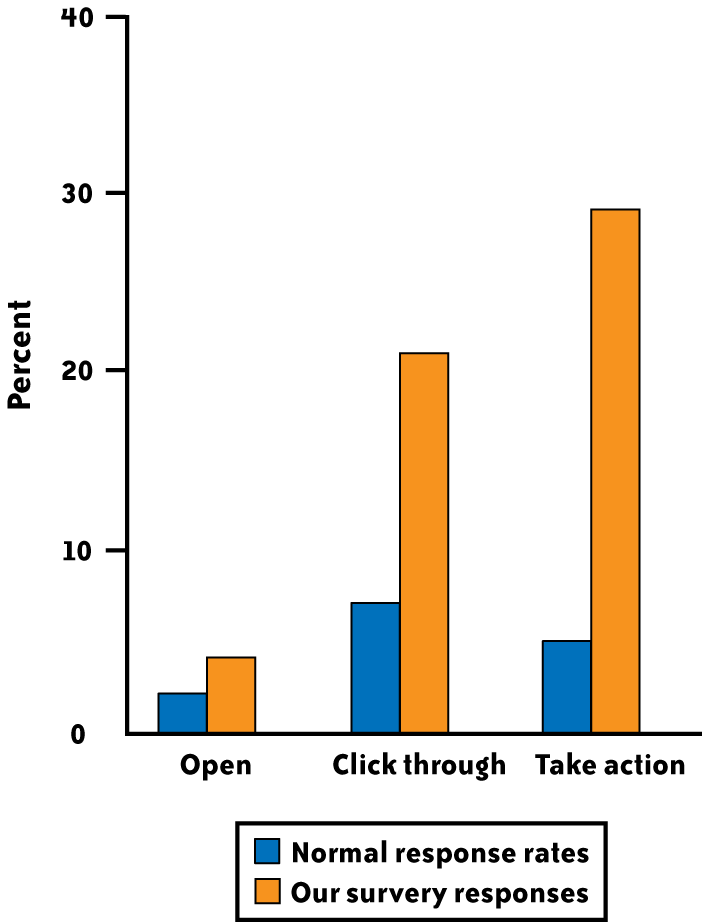Results and Reflection
In the end, was all of this effort worth it? It's just a web form, right? People fill out millions of these things every day. Some might think that we don't need to put any more thought into how to design one—that the "problem" of creating a usable web form has already been solved, once and for all. But you should never underestimate the lack of effort that has been given to solving the most common design problems, particularly online. Most forms today are not much different than the ones that rolled out in the early 1990s.
Moreover, if there's one thing a good designer, especially one following UX principles, should know, it's that there is no such thing as a one-size-fits-all solution. Customization for your user group will almost always improve the experience—and, in this type of exercise, your data collection.
The results in our client's case appear to have been well worth the effort. We learned that, for this email marketing company's previous campaigns, normal rates of opened emails were in the 1-2% range; our mailing hit 4%. The normal click-through rate was 5–7% of opened emails; ours reached 21%. Most relevant, the normal rate of those who click through to the web page and then take action (i.e., complete the form) is usually 2–5%; for our design, that completion rate was 29%. (See Figure 2-8.)

Figure 2-8. The response rates for our survey were significantly ...
Get Beautiful Data now with the O’Reilly learning platform.
O’Reilly members experience books, live events, courses curated by job role, and more from O’Reilly and nearly 200 top publishers.

